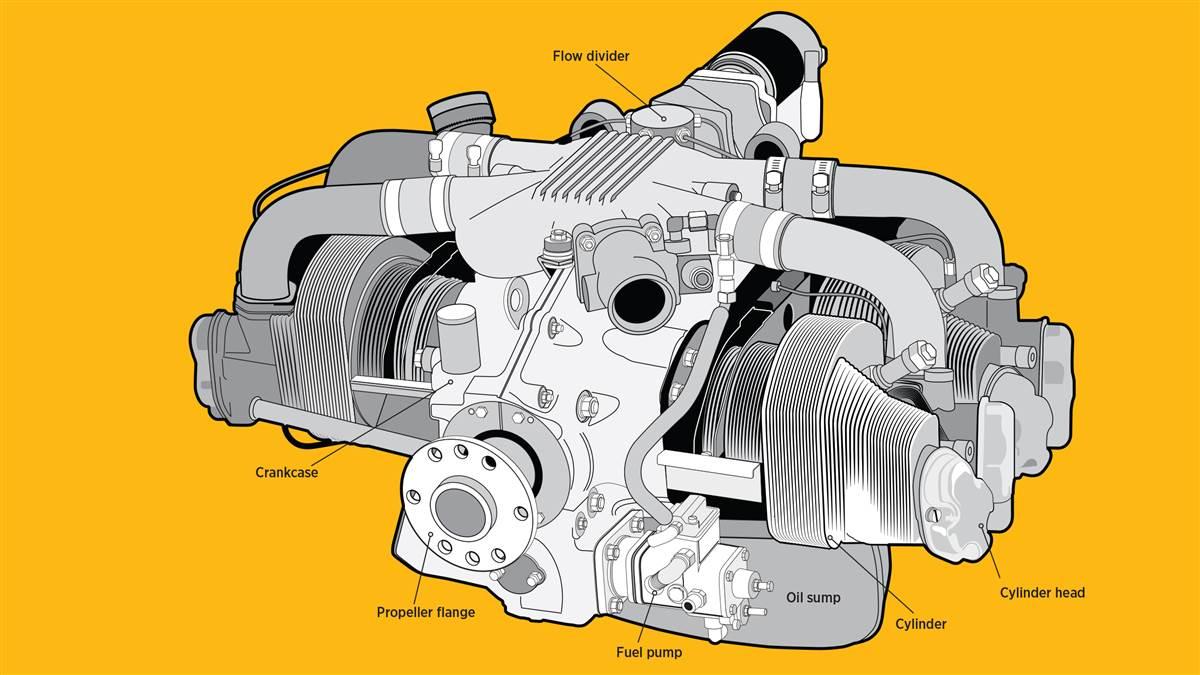How It Works: Piston Engine
Most trainers’ powerplants operate the same way

Illustration by Steve Karp
Most trainers’ powerplants operate the same way
Whether you prefer the slang “motor,” the broader “powerplant,” or the standard “engine,” that hunk of metal that drives the propeller is what defines an airplane. Despite a wide range of power and altitude applications, airplane engines are strikingly similar, and operate much the same way.
Most light aircraft piston engines burn a form of gasoline; are cooled by air; rely on a pair of magnetos for ignition; and have four or six cylinders that sit in a flat, horizontally opposed configuration. Older and smaller engines tend to be carbureted, while bigger and more modern designs are almost all fuel injected. With the exception of adding on a turbocharger, these traits describe 80 percent of what you’ll see in the general aviation fleet.
While many people lament aviation engine technology as being stuck in the middle of the last century, there’s a good reason for most of these common configurations. Air cooling is more reliable and lighter than water cooling (an engine with a radiator). Rotax is the outlier. Its engines are found on many Light Sport aircraft, and each relies on a combination of liquid and water cooling. Magnetos are inefficient, but because they operate independently, an electrical failure won’t result in engine stoppage. Finally, few cylinders with large bores suit the long-running, relatively low rpm needs of airplanes.
Because of their similarities, engine operation is rarely the biggest concern when transitioning from one airplane to another, especially if you’re jumping laterally in power. Going significantly up or down in horsepower will require some training, but basic operation rarely changes.



